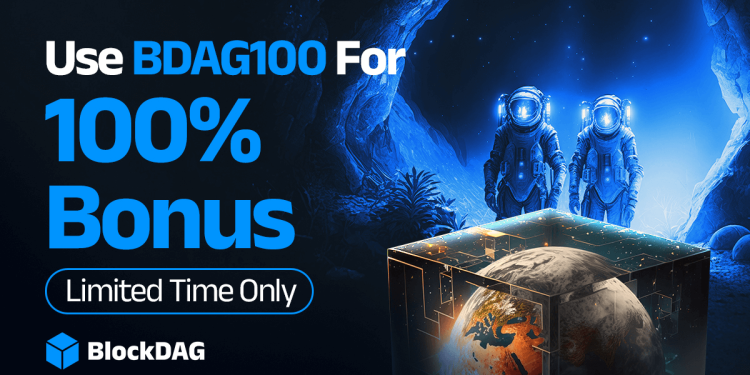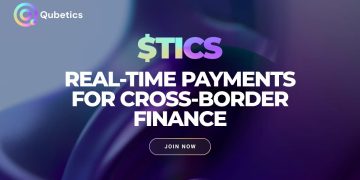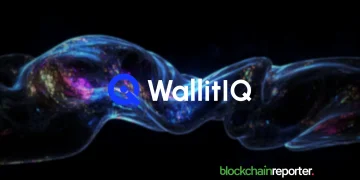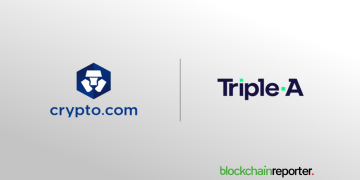In the cryptocurrency arena, well-known names like Bitcoin, Ethereum, and Solana often steal the spotlight, overshadowing lesser-known but equally innovative networks. Stacks (STX) and BlockDAG (BDAG) are two such networks that have carved a niche for themselves, emerging as undervalued contenders for 2025. With their distinctive technologies and expanding ecosystems, they have quietly garnered substantial market interest. Both are progressing in terms of scalability, user interaction, and practical applications, securing their place as significant assets within the blockchain ecosystem.
Stacks (STX): Enabling Smart Contracts on Bitcoin
Stacks seeks to merge the functionalities of Bitcoin with smart contracts, establishing itself as a standout layer-2 solution. Operating alongside Bitcoin, Stacks leverages Bitcoin’s robust security while supporting decentralized apps and smart contracts. What role does STX play? It serves as the fuel for these contracts, compensates miners, and facilitates transactions across the Stacks network. This setup not only preserves Bitcoin as a store of value but also transforms it into a fully programmable blockchain, paving the way for innovations in decentralized finance (DeFi) and beyond.
A major milestone for Stacks was the Nakamoto upgrade in late 2024, which uncoupled Stacks’ block generation from Bitcoin’s timing. This separation allows for swifter transactions without compromising the security guaranteed by Bitcoin’s finality. Additionally, the upgrade introduced sBTC, a Bitcoin-backed asset tailored for DeFi activities on Bitcoin’s blockchain. This feature enables users to dive into DeFi without moving their Bitcoin off-chain, appealing to those who prioritize security but are keen to explore the broader crypto market.
Stacks has seen a surge in developer activity, with over 1,400 smart contract launches monthly, signaling a vibrant and growing ecosystem. As the DeFi space expands, so does the allure of Stacks. By integrating with Bitcoin, Stacks offers a unique combination of security and innovation, maintaining Bitcoin’s status as one of the most secure and decentralized networks globally.
BlockDAG: Elevating Scalability Through DAG Innovation
While Stacks enhances Bitcoin’s capabilities, BlockDAG is establishing a stronghold with its Layer 1 blockchain that employs a Directed Acyclic Graph (DAG) to boost scalability and speed up transactions. The structure of BlockDAG enables simultaneous transaction processing, achieving higher throughput and reduced latency, which are crucial for widespread blockchain adoption. In contrast to traditional blockchain models, the DAG approach enhances scalability without necessitating higher energy use or steep transaction fees.
BlockDAG’s network has significantly expanded, marked by the X1 Miner App reaching 200,000 active users. This application allows users to mine BDAG, BlockDAG’s own cryptocurrency, directly from their mobile devices without heavily draining battery life or diminishing device performance. The ease of mobile mining has catalyzed BlockDAG’s swift growth in users, showcasing how user-friendly mobile solutions can accelerate blockchain acceptance among the general public. By simplifying mining to the ease of an app download, BlockDAG is making blockchain rewards more accessible to all.
Furthermore, the BDAG100 bonus campaign by BlockDAG has sparked considerable interest, offering users the chance to double their BDAG holdings. Offering a 100% bonus on BDAG purchases serves as a dynamic enticement for attracting new users and enlarging the network’s footprint. The pre-sale has been highly successful, collecting over $111 million and providing early adopters with returns up to 2100%, underscoring the robust interest in BlockDAG. With the upcoming launch of its mainnet, BlockDAG is poised to challenge established giants like Solana and Ethereum in terms of scalability.
Forecasting the Impact of Stacks and BlockDAG for 2025
The progress observed in Stacks and BlockDAG indicates their readiness for substantial growth, each harnessing unique capabilities. Stacks capitalizes on the established security and reliability of Bitcoin, augmenting it with the functionality of DeFi and smart contracts. Conversely, BlockDAG merges blockchain with DAG technology to facilitate rapid transactions in a user-friendly mobile format. What function does STX serve? It primarily enables smart contracts and rewards those participating in the network, aligning with the growing need for Bitcoin’s application in DeFi and decentralized apps (dApps).
Both platforms are advancing with novel strategies in scalability and user engagement, laying the groundwork for widespread adoption. For investors searching for high-potential yet underappreciated assets, Stacks and BlockDAG present solid opportunities for 2025. Stacks is particularly appealing to Bitcoin aficionados eager to delve into decentralized applications, whereas BlockDAG’s streamlined mining and DAG framework offer an optimal solution for users seeking accessible, high-performing networks. As these initiatives continue to build momentum, they stand as undervalued gems in a competitive field, epitomizing the transformative promise of blockchain technology for the future.
Website: https://blockdag.network
Presale: https://purchase.blockdag.network
Telegram: https://t.me/blockDAGnetworkOfficial
Discord: https://discord.gg/Q7BxghMVyu























